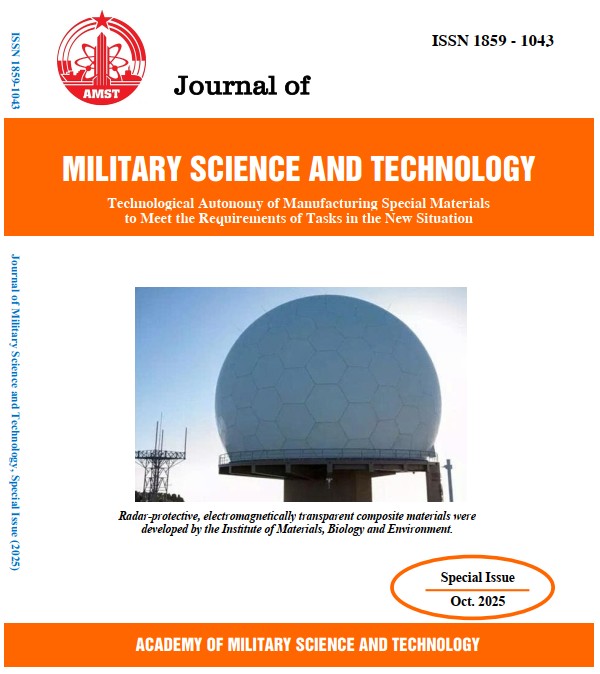Enhancing electrochemical properties for aluminum-based anode materials for LIBs with PVP-derived carbon protective coating
DOI:
https://doi.org/10.54939/1859-1043.j.mst.IMBE.2025.214-220Keywords:
Aluminum-based anode material; Lithium-ion batteries; Carbon coating; Polyvinylpyrrolidone.Abstract
This paper presents a study on improving the electrochemical performance of commercial aluminum powder as a LIBs anode material with a protective shell derived from PVP via a simple process. The fabricated Al@C shows a significant change in surface characteristics. The outer coating prevents the active material from rapid deterioration and maintains capacity over many cycles. CV scans at cycle 200 demonstrated a notable enhancement in the intensity of redox peaks, indicating effective preservation of the active material structure. The coating also influences the lithiation process of the underlying aluminum, leading to a gradual activation of the material during operational. The EIS measurements revealed that the protective coating enhances the SEI layer formation over multiple cycles. The study's findings suggest a possible approach to effectively mitigate the issues related to aluminum as an anode material for LIBs.
References
[1]. T. Zheng, J. Zhang, X. Guo, W. Jin, and S. T. Boles, “Unlocking room temperature formation of Li-rich phases in aluminum anodes for Li-ion batteries,” Electrochimica Acta, p. 144127, (2024).
[2]. G. D. Kwon et al., “Graphene-coated aluminum thin film anodes for lithium-ion batteries,” ACS Applied Materials & Interfaces, vol. 10, no. 35, pp. 29486–29495, (2018).
[3]. H. Wang et al., “The progress on aluminum-based anode materials for lithium-ion batteries,” Journal of Materials Chemistry A, vol. 8, no. 48, (2020).
[4]. J. Muldoon, C. B. Bucur, N. Boaretto, T. Gregory, and V. Di Noto, “Polymers: Opening doors to future batteries,” Polymer Reviews, vol. 55, no. 2, pp. 208–246, (2015).
[5]. N. Sazali, W. N. W. Salleh, M. Nur Izwanne, Z. Harun, and K. Kadirgama, “Precursor selection for carbon membrane fabrication: A review,” AMST, vol. 22, no. 2, (2018).
[6]. A. Belgibayeva, S. Berikbaikyzy, Y. Sagynbay, G. Turarova, I. Taniguchi, and Z. Bakenov, “A review on electrospun polyvinylpyrrolidone-derived carbon composite nanofibers as advanced functional materials for energy storage applications and beyond,” Journal of Materials Chemistry A, vol. 11, no. 23, pp. 11964–11986, (2023).
[7]. T. Schoetz, L. W. Gordon, S. Ivanov, A. Bund, D. Mandler, and R. J. Messinger, “Disentangling faradaic, pseudocapacitive, and capacitive charge storage: A tutorial for the characterization of batteries, supercapacitors, and hybrid systems,” Electrochimica Acta, vol. 412, p. 140072, (2022).
[8]. O. Bruj and A. Calborean, “Electrochemical impedance spectroscopy investigation on the charge–discharge cycle life performance of lithium-ion batteries,” Energies, vol. 18, no. 6, p. 1324, (2025).







